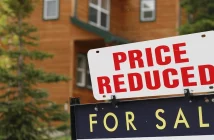Despite buying activity among New Zealand first home buyers falling to its lowest level since 2011, CoreLogic NZ Chief Property Economist Kelvin Davidson says market newcomers have still shown remarkable resilience compared to other buyer groups

CoreLogic’s biannual First Home Buyer report shows around 3,750 first time purchases were completed in Q3 2022, the lowest figure for that quarter of the year since 2011. The result was not a major surprise, given the continued affordability pressures, tight lending rules, and higher mortgage rates.
However, he despite low volumes the proportion of first home buyers as a share of all buyers had improved throughout 2022.
All buyer groups are being hindered to some degree by those same factors, and actually first home buyers (FHBs) have ‘held on’ relatively well in this environment.
In fact, the proportion of FHBs relative to the rest of the market has improved, increasing from 23% over the first half of 2022 to closer to 24% in the third quarter. That’s higher than the long-term average FHB market share, which is around 22%.
Since the previous edition of the First Home Buyer Report in May 2022, New Zealand’s housing market downturn has become even more embedded, with buyers and sellers taking their time over settling deals resulting in low sales transactions generally.
Relative to other buyer groups, there was a flicker of confidence re-emerging among FHBs even in a testing credit environment.
We suspect some of these recent buyers had previously held back as prices fell, but have now started to see value again – maybe even some genuine ‘bargains’ – and are prepared to make a purchase even if house prices haven’t fully found the floor just yet.
However, with inflation now looking to be more of a problem, the official cash rate headed higher, and home loan interest rates rising again, typical mortgage rates are likely to rise towards 7% or more over the coming months.
That would be a stern test for many would-be FHBs, especially since the fortnightly cost to rent is starting to look comparatively cheap.
A simple comparison of fortnightly rents versus mortgage repayments shows being a tenant is significantly cheaper (ranging from a $927 saving in Auckland to $401 in Dunedin, and $564 nationally) – as mortgage rates have risen and rental growth has cooled.
Property type
Standalone houses – as opposed to apartments or flats – now represent a slightly higher proportion of all FHB purchases, at 74% in Q3 2022 compared to 73% for the same period in 2021. The figures suggest the wider market downturn has now started to bring larger dwellings back into reach again for FHBs.
FHB median price
The median price FHBs are paying to enter the market has started to decline lately. In Q3 2022, the FHB median was $720,000, down from $750,000 in Q2, and $759,000 in Q1. This mirrors the current ‘buyer’s market’ conditions.
The median price of $720,000 being paid by FHBs is lower than it’s been for some time but still significantly higher than the lower quartile (bottom 25%) across all buyers, of $580,000. In other words, the ‘typical’ FHB doesn’t always enter at the bottom of the market and work their way up.
Where FHBs are most active
Across Auckland, Hamilton, Tauranga, wider Wellington, Christchurch, and Dunedin, the national FHB trends can be seen playing out.
Many of these areas have seen decent strength in FHB market share in recent months, especially Hamilton and Wellington, where the latest share of figures are around 5% higher than the long-term average.
As was the case at the national level, each of the main centres recorded a FHB median price in Q3 2022 that was lower than for all buyers. Auckland had the highest median FHB price paid of $940,000, and also the largest gap relative to all buyers – $163,000 less than the all buyer median of $1,103,000. Tauranga’s FHB price paid just topped $800,000 in Q3, with Hamilton and Wellington around $750-$760,000, and Christchurch and Dunedin had less than $600,000.
FHB outlook
The tougher lending environment has been at the heart of this downturn, just as it also played a key role in the post-COVID upswing.
Tight rules around loan-to-value ratios, the restrictions of the CCCFA legislation, curbs on high debt-to-income ratio mortgages, and sharply higher mortgage rates have all added to the pressures.
As a result, the total number of properties being purchased by each buyer group is down, but FHBs have managed to hold on relatively well in terms of market share.
FHBs have no doubt benefitted from improving housing affordability as prices have fallen and in recent months we’ve seen their relative presence in the market increase a little.
There was a noticeable lull in FHB market share during the first half of 2022, compared to the second half of 2021, when they represented one in four buyers. To see them picking up market share closer to that figure again between July and September shows their resilience and determination to get into the market.
This is occurring when mortgage rates have risen sharply and rent increases have slowed, with many areas now cheaper to rent than pay a mortgage. This straight-forward comparison certainly highlights that most FHBs are likely to be purchasing for reasons other than simple financial drivers, such as stability of tenure.
Key insights from this report include:
- The number of purchases made by FHBs in Q3 was around 3,750 and the lowest for that quarter since 2011.
- The proportion of FHBs compared to all other buyer groups has increased from 23% in the first half of 2022 to 24% in Q3. The historical average for FHB market share is around 22%.
- Auckland had the highest median FHB price of $940,000, down on the $1 million they spent in Q1 2022 to get into the market.
- Invercargill and Whanganui were both at the lower end of the spectrum, with FHBs paying a median of $425,000 in both markets.
- Standalone houses accounted for 74% of FHB purchases in Q3 2022.
- FHBs paid a median price of $720,000 to get into the market in Q3 2022, compared to $759,000 in Q1 2022.



